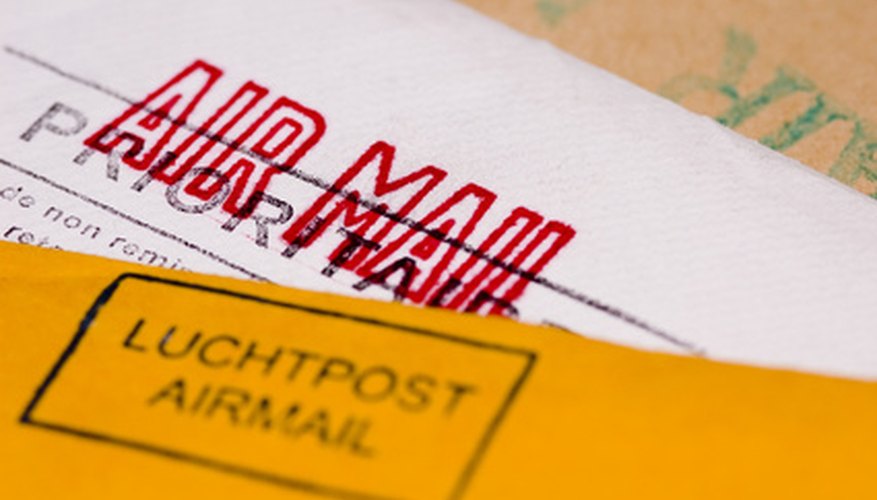Nowadays, most correspondence is exchanged over the Internet via e-mail. However, you may still wish to occasionally send an old-fashioned letter to a friend or colleague. Correctly marking the envelope will ensure that your letter will reach your recipient and be delivered according to any special instructions that you may have.
Write the recipient's name in the centre of the envelope, preferably using a pen or marker. Below the name, write the street address including the street name and street number. If you are sending your letter to a Post Office Box, include the P.O. Box number on the first line. Include any apartment or unit numbers, if applicable. On the next line, write the city name followed by the two-letter state abbreviation, separated by a comma. Write the Postcode next to the city name. A five-digit Postcode will suffice, but your letter may arrive to your destination more quickly if you use the full nine-digit Postcode.
- Nowadays, most correspondence is exchanged over the Internet via e-mail.
- A five-digit Postcode will suffice, but your letter may arrive to your destination more quickly if you use the full nine-digit Postcode.
Write your name in the upper left-hand corner of the envelope, preferably using a pen or marker. Below your name, write your return address, including the street name and street number. Include any apartment or unit numbers, if applicable. On the next line, write your city name followed by the two-letter state abbreviation, separated by a comma. Write your Postcode next to your city name.
- Write your name in the upper left-hand corner of the envelope, preferably using a pen or marker.
- On the next line, write your city name followed by the two-letter state abbreviation, separated by a comma.
If you are sending your letter to an international destination, write the name of the country below the address in the centre of the envelope in capital letters. Underline the country name for optional emphasis. In the lower right-hand corner of the envelope, write "AIR MAIL" or "PAR AVION" to ensure that your letter is delivered internationally in the most efficient manner.
Add the required postage to the upper right-hand corner of the envelope. According to the USPS website, the standard postage for a First Class domestic letter is 44 cents, as of 2010. The standard rate for a First Class international letter is 98 cents, as of 2010. If your letter is heavy, large, or contains rigid objects, the postage could vary from these prices. Take your letter to the post office to have it weighed to ensure that you have included the correct amount of postage.
- Add the required postage to the upper right-hand corner of the envelope.
- According to the USPS website, the standard postage for a First Class domestic letter is 44 cents, as of 2010.
Include any special instructions for delivery. For example, if your letter contains fragile components, write "Fragile -- Handle with Care" on the bottom or back of the envelope. Your envelope is now ready to be mailed.
WARNING
Mark your envelope in legible print or your letter may not be delivered to the correct address.
